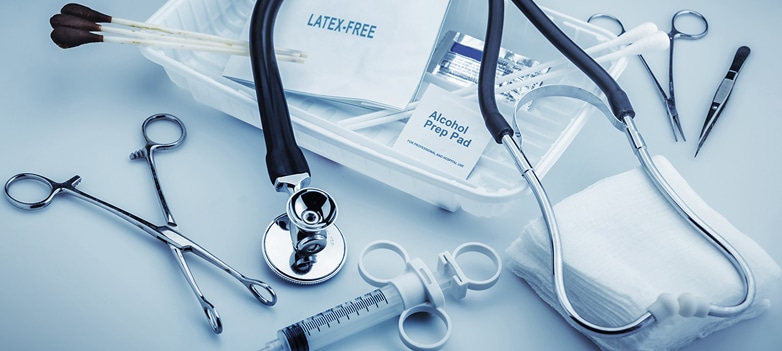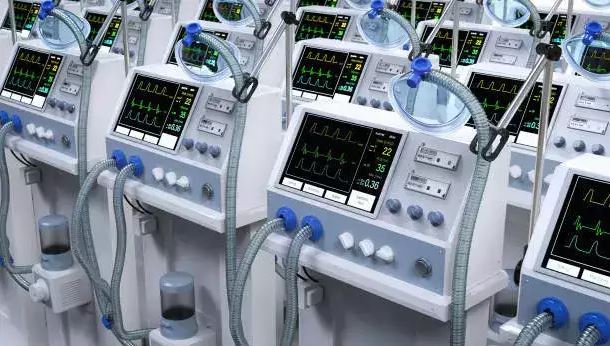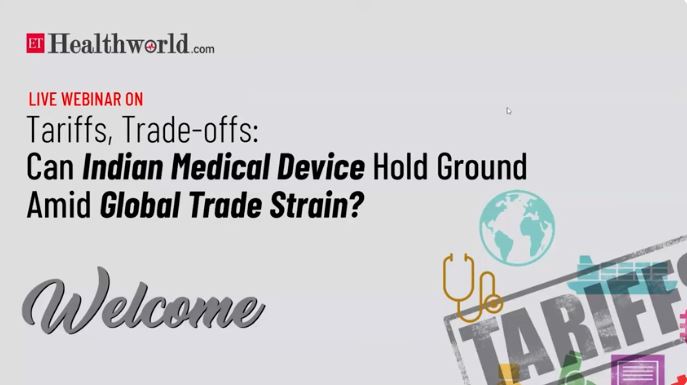Image credit: shutterstock
The National Medical Devices Policy, 2023 that got the approval of the government on April 26 seems to have made the medical devices sector happy. The slew of strategies mentioned in the policy assures a win–win outcome for the manufacturers as well as patients. Experts are upbeat about the projected growth of the sector in the near future. The policy aims to bring a range of interventions in a coherent manner that would facilitate focussed and efficient support and facilitation for the sector by the respective agencies. Let’s explore further.
The medical devices sector was nothing short of thanking the government for the recently announced approved policy National Medical Devices (NMD) Policy, 2023 by the Union Cabinet, chaired by Prime Minister Narendra Modi. The policy is expected to help the medical devices sector to grow from present $11 billion to $50 billion in next five years.
It is being touted by experts in the medical devices sector as a positive step where the industry is likely to become Atmanirbhar which will help to make affordable high quality and safe medical devices accessible to the world. This Policy will be in addition to the existing Production Linked Incentive (PLI) schemes that are underway.
Notably, till the recent 2023 Budget, the sector wasn’t all too pleased with the government’s position, as nothing substantial was announced for the sector. The sector had been seeking reforms since the past few years and ultimately it can now heave a sigh of relief.
Key focus areas
The current policy aims to put in place a comprehensive set of focus areas for the growth of the sector in a coordinated manner. The policy aims to bring a range of interventions in a coherent manner that would facilitate focussed and efficient support and facilitation for the sector by the respective agencies.
The National Medical Devices Policy, 2023 is expected to facilitate an orderly growth of the medical device sector to meet the public health objectives of access, affordability, quality and innovation. This sector is expected to realise its full potential, with the strategies, including, building an enabling ecosystem for manufacturing along with a focus on innovation, creating a robust and streamlined regulatory framework, providing support in training and capacity building programmes and promoting higher education to foster talent and skilled resources in line with the industry requirements. Encouraging domestic investments and production of medical devices complements the Government’s ‘Atmanirbhar Bharat’ and ‘Make in India’ programmes.
Ebullient industry
Experts are content with the new policy announced with many mentioning that the move will unleash the sector’s full potential, facilitating the development of patient-centric solutions to meet evolving healthcare needs and making India a global leader in the manufacturing and innovation of medical devices.
Veena Kohli, CEO, Vanguard, who previously served as the President of the Association of Diagnostics Manufacturers of India (ADMI), had the opportunity to submit recommendations regarding the challenges and growth opportunities for the Indian IVD industry to the concerned Parliamentary Standing Committees.
She mentioned, “It is very encouraging to see that several of our inputs have been included and addressed in the recently released National Medical Devices Policy, 2023. The Indian IVD industry today, is at a point of inflection from where it could be catapulted to the next orbit of growth, quite like the IT industry of India post the year 2000 and the pharma industry after the global acceptance of generic formulations, in 1985. The policy encompasses all the necessary components to achieve Vision @2047. The policy’s focus on catalysing R&D and innovation will be pivotal to the growth of the sector and will help change these dynamics.”
Going forward, Rajiv Nath, Forum Coordinator, Association of Indian Medical Device Industry (AiMeD), who has been critical of the government’s initiatives for the sector hopes for the speedy implementation of the policy. He stated, “The Parliamentary Committee had recommended a separate law, separate department, tariff correction and price control and other measures which, if implemented, will give direct benefit to consumer and industry. If the government acts like a doctor, the patient will not remain in the ICU but will step out healthy and laugh from the ward itself.”
Nath, however, raised the concern that consumers should reap the benefit from the policy. He goes on to add, “So far there is no restriction or capping on the MRP prices of medical devices from the government. Especially some private hospitals give the brand they want to the consumer of their own free will. Some hospitals are less concerned about the affordability needs of the patients and more concerned about their profit. They consume high MRP goods instead of low-cost options. Because of this, the manufacturer or importer in India is tied up in a system of market operating with artificially inflated MRP labelled on the device. We have been seeking a system whereby ethical manufacturers and importers can offer low-priced MRP products and still, they can sell. We have been seeking MRP of imports to be monitored and compared with imports landed prices and steps taken to control when found irrationally excessive.”
The newly laid policy will catalyse India’s emergence as a global hub for medical device manufacturing and innovation. This, according to Dr Sanjeev Relan, Chairman, Preventive Wear Manufacturers Association of India (PWMAI), will present a remarkable opportunity for collaboration between industry stakeholders, government bodies and healthcare professionals to collectively shape a future where advanced medical technologies are accessible, affordable, and seamlessly integrated into the healthcare ecosystem.
Sharing his views, Jatin Mahajan, Secretary, Association of Diagnostic Manufacturers of India (ADMI) and MD, J Mitra & Company said, “The policy has several existing concerns. The most significant is the need for explicit provisions for training healthcare professionals and the end-users of these medical devices. This could result in mismanagement and incorrect usage, leading to potential health hazards, especially in rural and semi-urban regions with relatively low awareness and technical expertise. While stressing local manufacturing, the policy needs to provide a clear roadmap for technology transfer from global manufacturers. This lack of access to advanced technologies may hinder the production of high-end medical devices.”
“Though we still have to go through the fine print, we are encouraged by the spotlight turned on R&D. While India has only 1.5 per cent of the global medical device market, it has an 8 per cent share of the MedTech R&D workforce already. This is a fertile and proven area to focus on,” said Pavan Choudary, Chairman, Medical Technology Association of India (MTaI).
While praising the much-awaited policy Sachidanand Upadhyay, MD and CEO, Lords Mark Industries said, “The Indian government’s approval of the National Medical Devices Policy, 2023 is a significant move towards the growth and self-sufficiency of the country’s medical devices sector. The policy is a comprehensive approach towards accelerating the growth of the medical devices sector in India.”
Expressing his thoughts Dr G S K Velu, CMD, Trivitron & Joint Coordinator IVD (Diagnostic Vertical Group) AiMed opined, “We do hope this gives the necessary impetus to reduce import dependency in the medical devices sector and make India a global medical device manufacturing destination. If implemented along with a preference for buying locally made products, I am sure the medical devices sector will grow like the pharmaceuticals industry in the next 10 to 15 years.”
In the same vein, Ganesh Sabat, CEO, Sahajanand Medical Technologies stated, “The domestic industry is optimistic that together in a PPP mode, we would be able to create an ecosystem for the holistic growth of overall healthcare industry in India, make India self-sufficient and reduce import dependency to a large extent. We can expand both markets and exports, where one can hope to see exponential growth in the coming years to achieve Vision 2047.”
Aravind Viswanathan, CEO, Transasia Bio-Medicals pointed out that the policy will streamline the regulatory approval process for medical devices by introducing a single-window clearance system for indigenously manufactured designs and products. According to him, the move will also enhance the role of agencies such as Bureau of Indian Standards (BIS) in product manufacturing, processing, and even looking at its performance. He opined, “The need of the hour is to fast track the implementation of this policy in order to achieve the mission of self-reliance and reducing our dependency on imports.”
The way forward
In another recent development, the Department of Pharmaceuticals, government of India announced the scheme for “Assistance to Medical Device Clusters for Common Facilities (AMD-CF). The scheme aims to strengthen medical device clusters by providing financial assistance and strengthening and/or establishing more testing laboratories for medical devices to improve quality and sustainable growth.
For Common Infrastructure Facilities (CIF) for the Medical Device (MD) clusters, the limit of support will be 70 per cent of the approved project cost or Rs 20 crore, whichever is less, as per the approval of the Scheme Steering Committee (SSC). In the case of Himalayan States and States in the North East Region, the grant-in-aid would be Rs 20 crore per cluster or 90 per cent of the project cost of the CIF, whichever is less.
While Medical Devices Parks, as planned clusters with shared common manufacturing and testing or warehousing and clearing facilities are being encouraged to help reduce the capital expenditure (CAPEX) of manufacturers, it is also important to strengthen the existing manufacturing natural clusters in different parts of the country.
More so, Dr Manshukh Mandaviya, Union Health Minister, who was in Tokyo on May 16 to attract investments, while emphasising the crucial role of the medical devices sector in India’s healthcare industry, urged Japanese medical device manufacturers to take the advantage of the ‘Make in India’ initiative.
Dr Mandaviya also projected a four-fold growth in the medical devices sector by 2030, from its current size of $11 billion. He stressed that India’s industry could emerge as a global leader in medical device manufacturing and innovation over the next 25 years, in line with India’s G20 Presidency aims.
The policy has been announced with much fanfare and experts in this field are excited about it. With the new policy in place, the Centre aims to reduce India’s import dependence to nearly 30 per cent in the next couple of years; and become one of the top five global manufacturing hubs. However, the time frame of implementation of the policy will determine when the benefits accrued by the medical device players can ultimately be passed onto the consumers.




